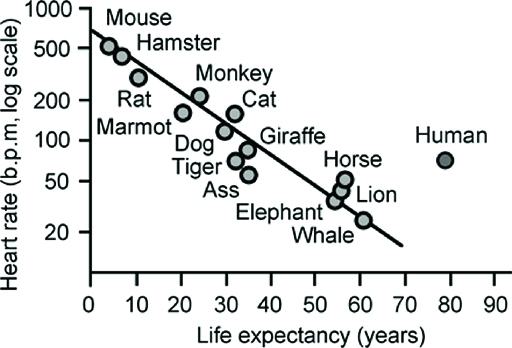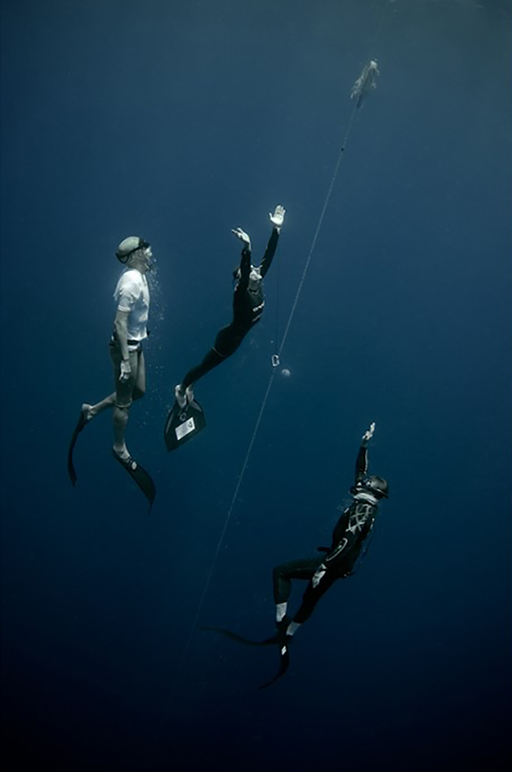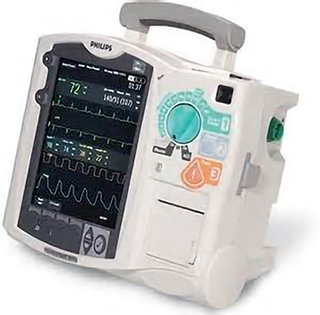7 Comparing the heart rates of animals and human beings
Is a person’s life expectancy greater or less than an animal’s life expectancy? In Figure 11 you can see that a human’s life expectancy is longer. This graph is a ‘logarithmic–linear’ scale, so you need to be careful when you read values from the scales. On the heart rate scale (the vertical one on the left), the values go up in tens from 20 to 50 and then in hundreds from 100 to 1000. This helps to fit the data on a more manageable graph. The life expectancy scale increases linearly, from 0 to 90 in equal increments of 10.

Activity _unit3.8.1 Activity 8 Life expectancies and heart rates
Using the data in Figure 11, answer the following questions, choosing one correct option for each.
a.
20 years and 100 bpm
b.
60 years and 20 bpm
c.
80 years and 80 bpm
d.
90 years and 20 bpm
e.
100 years and 80 bpm
The correct answer is c.
a.
20 years and 100 bpm
b.
55 years and 40 bpm
c.
60 years and 20 bpm
d.
80 years and 100 bpm
e.
100 years and 80 bpm
The correct answer is b.
3. Choose the correct options provided to complete the following conclusions.
4. Choose the correct options provided to complete the following conclusions.
Human beings are incredibly adaptable. For example, free-divers can slow down their heart rates substantially and can dive to incredible depths (Figure 12). Every 10 metres down in the water adds another atmospheric pressure (about 100 000 newtons per square metre). So, the pressure at great depths quickly becomes very dangerous. This contrasts with the pressure when you are at an increased height. This pressure reduces, which you experience when your ears ‘pop’ and you need to swallow to equalise the pressure.
Everyone is aware of the dangers of heart attacks. You may have seen a defibrillator (Figure 13). This life-saving device can help to save human lives by stopping and then restarting a heart that is fibrillating or in cardiac arrest. There are portable versions, which can be used by paramedics, and community ones are also now available in public places such as shopping centres and airports.
You have seen how your heart rate can be compared with an astronaut’s; clearly your heart is a measure of your overall health. When placing astronauts into physically challenging situations, their hearts are working incredibly hard. Indeed many of us will experience heart racing situations; it’s reassuring to know that defibrillators are more available now in the event of an emergency!
You will now move on to your next practical activity, growing mold on bread.


